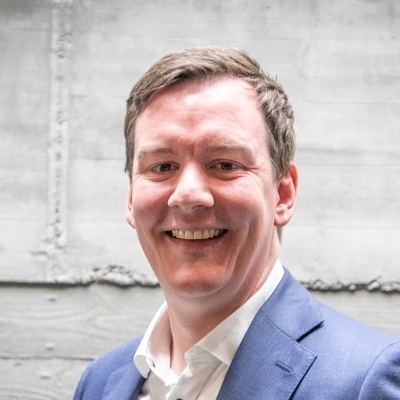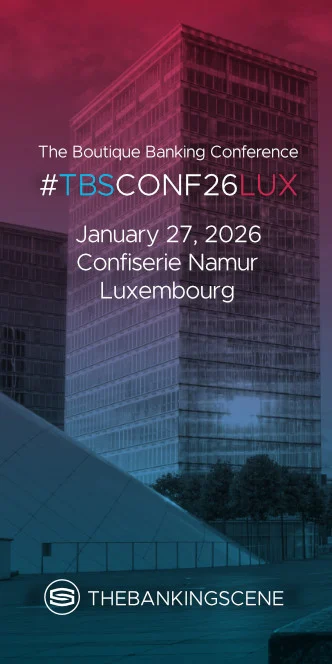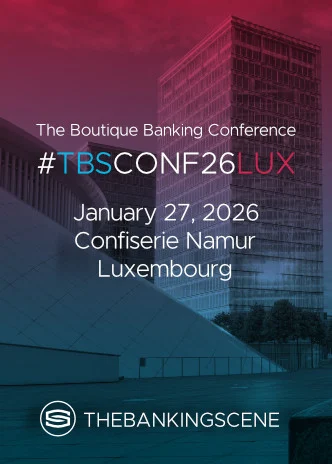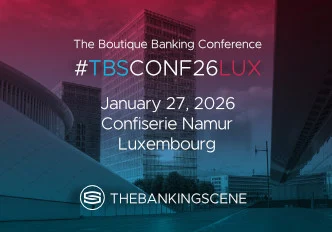
Insights & Opinions
Consolidation Trends in the Banking Sector: Best Practices Beyond M&A Deals
Tue, 15 Oct 2024


Based on the M&A Monitor 2024 conducted by Vlerick, the Belgian mergers and acquisitions market has shrunk for the second consecutive year, in contrast to the financial institutions (FI) sector, where M&A activity is booming. The banking sector has seen a surge in mergers and acquisitions in recent years, with several notable takeovers highlighting the consolidation trend. Recent examples include the acquisition of Nagelmackers by French BPCE, Aion Bank by Unicredit, and private bank Dierickx Leys by Bank Delen. A few years prior, Crelan’s acquisition of AXA Bank was another significant move. The M&A landscape continues to evolve, with Indosuez Wealth Management acquiring Degroof Petercam (DP), Van Lanschot merging with Mercier Vanderlinden, and BNP Paribas Fortis expanding its retail banking portfolio by taking over Bpost Bank.
Looking ahead, the trend on the market remains, with rumours circulating about potential moves involving Belfius in Belgium. On the international front, BNP Paribas Asset Management (BNP AM) has entered into negotiations to acquire AXA Investment Managers, signalling its ambition to grow its asset management business. Speculation also surrounds ABN AMRO in the Netherlands and Commerzbank in Germany. These developments are a consequence of the industry's broader drive toward consolidation, driven by technological advancement, client service enhancement and regulatory adaptation.
TriFinance, one of our valued corporate members, is an atypical consultancy company and is praised (among others) for helping banks realise the expected benefit before and after a merger or acquisition. We spoke to two of TriFinance’s experts to hear about their lessons learned in making the challenging track of a merger or acquisition a success: Stéphanie Struelens, Business Unit Lead Pragmatic Advisory and Implementation for Financial Institutions, and Inne Vermeiren, Project Manager.
What are the primary motivations for banks pursuing mergers and acquisitions in today's financial landscape?
Stephanie Struelens: There are several reasons for mergers and acquisitions, with the regulatory environment being considered the most important factor driving M&A activity today. The fast-evolving and increasingly stringent regulatory environment demands that banks continually adapt to new expectations, which can be both costly and complex. Our observations indicate that new regulations such as ESG, Basel IV and Instant Payments Regulation, as well as additional guidelines from the EBA, the AI act and many more, play significant roles in driving M&A. Regulations are not always clear from the start, which makes it important to find a balance. While starting early is crucial to get prepared and avoid an inability to report timely and qualitatively, it is also a highly iterative process that requires significant rework as further guidance and clarifications emerge. The combination of increasingly more change, and a higher level of iterations per change put teams under constant additional pressure.
As an example, in the past, finance departments experienced peak periods during closing time that lasted for two or three weeks. Now, the closing period often lasts for a month and a half or more, adding to the pressure. On top of that, there are new regulations to adhere to, making it a peak period all the time. This places significant pressure on people and requires the implementation of new platforms, processes, and granular data. These investments are unsustainable for smaller players, which I believe is the biggest reason for the current new wave of mergers and acquisitions.
Another reason that has a similar impact but originates differently is the emergence of new risks. These include ao. cybersecurity, fraud, money laundering, as well as sustainability risks. These new risks keep adding up and expanding the risk framework and risk management strategies.
The third reason that we see is the current state of the markets. We've recently emerged from a prolonged period of very low interest rates, which has significantly disrupted traditional banking business models. These low rates have squeezed profit margins, making it increasingly difficult for banks to generate income through conventional lending practices. As a result, many banks find their existing business models unsustainable, prompting them to seek strategic alternatives such as mergers and acquisitions (M&A).
Inne Vermeiren: International banks view market expansion as an opportunity to diversify their portfolios by acquiring new business lines, products, or segments that they may not currently offer. This approach allows them to provide clients with a more diverse range of services, potentially increasing customer loyalty.
Clients are more likely to stay with a bank when they have a variety of services available to them. This is one of the reasons we see an increase in digital transformation. In the past, fintechs and neobanks were seen as competitors to traditional banks. However, we now observe partnerships and acquisitions between fintechs and traditional banks, allowing the banks to expand their digital offerings. For example, ABN AMRO acquired BUX and BNP Paribas has a stake in Abbove (PaxFamilia) for wealth planning. Additionally, Belfius has invested in Insurtech Alan in France, as reported on September 20th.
We believe that sustainability may soon be added as a reason, but we don't see it yet in the banking market as a trigger for mergers and acquisitions. Maybe in the future, we could see organisations with strong ESG credentials becoming attractive acquisition targets for companies with less favourable environmental and societal impacts, as this could help improve their ESG position.
In your experience, what are the key challenges banks encounter when trying to align corporate cultures, post-merger?
Stephanie Struelens: The most significant challenge after a merger is managing people. Different leaders may have different opinions on what is most difficult in their daily job, but managing people is both challenging and rewarding. People have different values, beliefs, expectations, and resilience, which makes it complex. I believe that they all respond differently to these changes. Therefore, I think it's important to invest in transparent communication right from the beginning. You may not have the long-term strategy figured out yet, but taking immediate steps in the right direction is crucial.
For a small organisation that isn't accustomed to dealing with so many changes and large projects, this approach was quite challenging, to say the least.
Especially when small companies are acquired or are acquiring others, they often face similar issues. This can lead to clashes in culture, with employees from both organisations having to reapply for their jobs. Usually, the winning side brings along their own team, so combined teams rarely happen. I believe it's crucial to establish a new unified identity, rather than simply adopting the identity of the acquiring company, despite the challenges it may bring.
What strategies have proven effective in overcoming these cultural differences?
Inne Vermeiren: Stéphanie briefly mentioned the importance of building a new culture after a merger. Ideally, this new culture should be built from scratch, starting with a fresh foundation that reflects the values and goals of the newly merged organisation. However, this may not always be practical or possible, as integrating different existing cultures can be complex and require compromise. In some cases, a new manager who is not affiliated with either of the merging entities can provide a neutral perspective, help establish a new culture, and ensure that it is prioritised. However, this can be challenging, as without a strong cultural match, you risk ending up even further from where you originally stood.
The impact during a transition period cannot be underestimated. Next to the business as usual, there is also the human aspect of change and uncertainty which could lead to a lot of pressure on the team. With our expertise, we can make a difference by supporting the team more through collaboration and cooperation. We can take over some of the tasks that need to be done, so that people can focus on what comes next without feeling overwhelmed. By doing so, we can support them in their day-to-day work and drive the transformation forward while alleviating some of the emotional burden.
How do you ensure a smooth and effective transition during organisational transformations?
Stéphanie Struelens: Incorporating change management strategies and engaging in co-creation with stakeholders ensure that transformations are smooth and effective. And this is exactly what truly sets our Pragmatic Advisory & Implementation approach apart is our deep integration with client teams. “‘I didn’t know you were an external party’ is a compliment we often hear. We become part of the internal team, sometimes even working operationally alongside them. This integration allows us to understand the organisation intimately, ensuring our advice is both relevant and sustainable.
You face both people and technology challenges in bank mergers. How crucial is the unification of platforms and systems for a merger's success? What are the common hurdles in this process?
Stephanie Struelens: In many cases, both the acquiring company and the acquired one have their own history from previous mergers or changes in business models. When they come together, they bring their own legacy with them. To speed up the process, they often merge and pursue with one of the existing platforms. However, experience proved that adopting a new platform is usually the most effective solution to meet the requirements & needs related to the combined product offering. This ties directly into the cultural challenge that arises during mergers. When teams from different organisations are forced to operate on separate systems, it becomes exceedingly difficult to foster cohesion or promote effective collaboration. The lack of a shared platform can create barriers in communication, hinder cross-functional teamwork, and ultimately delay or derail the integration process.
In addition to these cultural hurdles, another significant challenge is the cost associated with integrating technology and systems. It's similar to buying a house—nobody buys a house within their budget; they always go over it because it's something they want. The same applies here. You agree to spend a little more for your deal, leaving less budget available for investments. As a result, you rush into it and end up with two separate systems, which will probably remain over time. I've never seen an MVP (minimum viable product) one followed by an MVP two. You always stop at the MVP one and then want to innovate and digitise your new product offering, focusing on your customers, which makes sense, but you never work on your newly created legacy on the short to medium run. Our advice is to invest in it from the start, because you will probably not prioritise it afterwards. That's at least what we observe.
Are there any other best practices worth sharing to ensure a smooth technological integration?
Inne Vermeiren: I believe that a combination of centralised and decentralised approaches works best. From a central perspective, it's important to have a clear strategy and prioritise tasks. Additionally, having a centralised expert team familiar with the business & IT architecture and the specific needs of each company is essential for defining the roadmap and the Target Operating Model. On the other hand, the decentralised approach involves having delivery squads with domain experts who have autonomy to work in their focus area. These teams are closely linked with the centralised team, but they also focus on their expertise, products and processes.
A deployment freeze, enabling the stability of the systems before the major release, also helps the teams to keep the focus. Clear communication is also key, not only within the technical teams, but across the entire organisation. Effective two-way communication is necessary to ensure that everyone is informed and actively involved.
Next to this there is the data synchronisation that is very much linked to technology. Sufficient time and effort should be dedicated to conducting a thorough data assessment before the merger. This involves creating a clear catalogue for all data sources, evaluating data quality, identifying links between systems, establishing a data governance framework with clear data policies, and forming a Data Governance team to handle these tasks from a centralised point of view.
Nowadays, banks need to assess not only structured data but also unstructured data much more than before.
Stephanie Struelens: I believe that things will improve in the future. Current regulations require banks to have disciplined data frameworks and models in place. Many architects are involved who are not only data experts but also ensure careful handling of data. They primarily work on interfaces and links to data. I think this will make future mergers easier, as banks are more conscious of and are putting a lot of work into it.
Looking at the future, how do you see the M&A landscape evolve for banks, particularly in light of emerging technologies and changing regulatory environments?
Stephanie Struelens: The future of M&A in banking will be strongly influenced by the rapid evolution of technology, particularly AI, and the ever-changing regulatory landscape. With 3,000 AI-related apps being released daily, the pace of technological advancement is overwhelming, creating challenges for smaller banks. These institutions will struggle to keep up with increasing regulatory demands and the risks associated with fast-evolving tech. The AI we see today is the least advanced it will ever be—tomorrow, it will be more powerful, adding further pressure on smaller players to adapt and compete. We've seen a notable decline in the number of Belgian banks. Meanwhile, larger international groups are gaining more influence, attracted by Belgium's strategic position within Europe. Only 6 of the top 20 banks in Belgium are still locally owned, reflecting a growing trend of foreign acquisition and consolidation in the market.
While fintechs continue to innovate, the creation of neobanks remains rare due to the complexity of obtaining and maintaining banking licences. The number of players in the market is decreasing, and while consolidation is still ongoing, the frenetic pace we're seeing now is unlikely to last given the size of the market.
Looking ahead, I expect more collaboration between banks, especially in areas like payments, shared ATM networks, KYC or other compliance initiatives. This cooperative approach is already common in places like Luxembourg, and I believe it will gain traction elsewhere. By standardising operational processes where competition isn't crucial, banks can focus more on enhancing customer relationships, digital transformation, and developing innovative products. Ultimately, technology and regulation will drive the future, pushing banks toward greater collaboration and streamlined operations.



